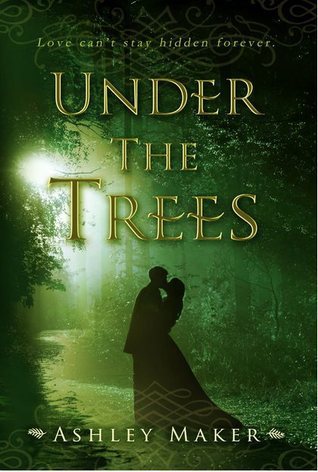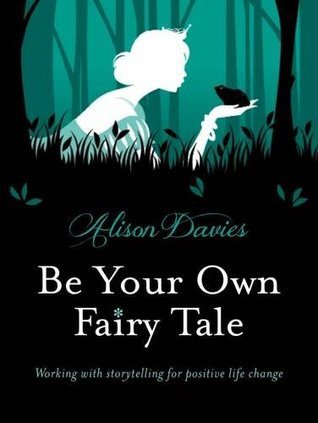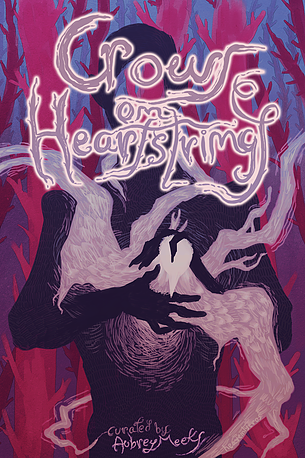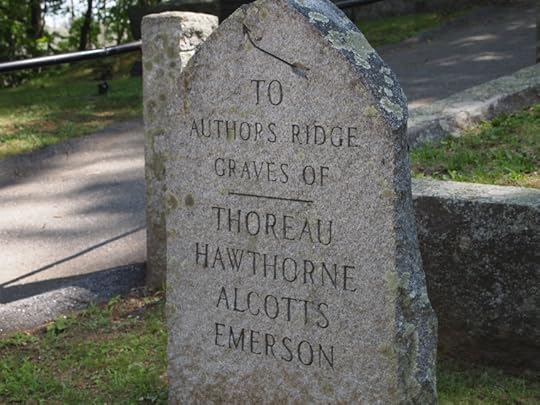Mariella Hunt's Blog, page 37
May 27, 2016
Book Review: The Paris Winter by Imogen Robertson

The Paris Winter leaves a proper chill in your soul after you finish reading it. It is the haunting story of Maud Heighton, an English painter who takes art classes in Paris, all the while struggling to get her daily meal.
Her situation doesn’t go unnoticed at the academy, especially when she starts to lose weight and ration meals. A fellow student from Russia named Tanya has sources; she takes Maud to find a job that’ll help her survive the winter.
Maud is employed as companion to the sister of wealthy, mysterious Mr. Morel. She is to teach Sylvie to draw, something she can do easily. It seems she’s finally found stability—she’s eating proper meals and sleeping in a warm room.
It was all too good to be true, however. The Morels had a sinister fate planned for her all along. They did not count on her surviving it, but she wakes with anger in her heart and a desire for revenge.
She’s been used in a scheme the Morels planned for months. When Christian Morel blames her for stealing the Countess’s tiara, she becomes a thief to society. He throws her in the river and claims she committed suicide, so she wakes up not only a thief but dead.
They could not have done more to destroy her reputation.
From childhood, Maud has learned to fight. They might have killed her in the eyes of society, but desire for revenge leaves her very much alive. With the help of her friends, she plans a comeback.
She works with the help of both Tanya and Yvette. A model from the academy, it was Yvette who noticed how thin she’d been getting. Roughened by a life on the streets, she’s courageous enough to stand by Maud to battle injustice.
Friendship is important in this novel. There’s no romance for Maud; as a main character, her strong relationships are with friends. They stand by her when she becomes the ghost of herself in pursuit of revenge.
This emphasis on friendship made the book unique. These women are there for each other in the face of horrific things. I wish more books focused on the strength one can in find a good friend.
Though Maud gets her justice, the ordeal changes her for life. She returns to England with Yvette, hard of heart and angry with life—but driven to start anew as an artist, respected and alive.
This will join my collection of Paris books as a favorite, having caught my attention from the start. Not only does it have a beautiful cover, it’s got an intense plot and strong relationships.
I recommend The Paris Winter to people who, like me, devour any book set in the City of Light. It is also great for fans of historical novels and thrillers. You will be satisfied by the ending; I am sure you’ll find a new favorite in it, as well.
Filed under: Book Reviews Tagged: book review, Historical Fiction, imogen robertson, literary fiction, paris, thriller








May 19, 2016
Why Write Realistic Heroes?

Your hero has been chosen to carry out a risky, important task. Lives depend on their ability to get the job done. They will face countless obstacles enduring sleepless nights in the cold at the mercy of nature. There is a chance they will die carrying out this quest.
How do they react to all this?
Heroes shouldn’t embark on these quests feeling no apprehension for what’s at stake. It depends on the character’s personality, of course—a hero who’s been raised expecting this sort of thing will experience less fear than a peasant offered as a sacrifice to the dragon. Some characters can and should be fearless in the face of this challenge.
Sometimes, though, writers get so anxious to finish the book that we’re tempted to skip a crucial step in making our protagonist react realistically. This is a horrible mistake: heroes need to be relatable, and if they’re not, there should at least be good reasons for why they’re so fearless.
REACTING TO THE HERO’S JOURNEY
Many books feature a Chosen One, and he often knows from childhood the ordeal he’ll be put through as a hero.
A character who’s lived with this knowledge will probably make all his choices before that ordeal keeping in mind he may die early—he’ll avoid attachments or long-term commitment, he’ll train for this event all his life. He may come off as cold or unfeeling.
Not all characters will be like this. Like in all cases, it depends on their upbringing—on what kind of parents they had, if they were revered or mocked at school for being ‘condemned’ to this quest. The point is, a character who knows what he’s going to face will live acting like it.
Even if he dreads it and is in denial, that denial is sign that he knows he’s been chosen. There’s no escaping the emotional effects of an assignment with this magnitude.
Now look at the unfortunate peasant plucked off the streets and chosen to fight the dragon. If he manages to slay the beast, he may be promised riches and the princess’s hand—luxuries he never dreamed could be his.
But he hasn’t lived anticipating something like this. He’s going to be scared. He’s going to fight it, at least for a while. He’s going to question at some point whether the mission is worth it.
WHAT’S THE DIFFERENCE?
What I’m getting at is this: The way a person is raised determines how they react to giant plot twists. The knight raised from childhood is more likely to be cocky and fearless than the peasant who’s been mocked all his life.
Too often, books do not notice the difference. Perhaps the peasant has had passing thoughts of a glorious quest to improve his life, but he hasn’t been living it; he probably hasn’t taken those thoughts seriously. They’ve always just been daydreams.
When facing this possibly fatal quest, he’s likelier to get cold feet than the knight raised from childhood.
Realistic humans don’t switch to hero mode in one night. Storytellers, make sure you explain why the peasant accepts this challenge so quickly, or why the hero doubts his mission.
Characters need to feel human.
WHY IS THIS IMPORTANT?
Heroes who don’t hesitate at logical moments can be annoying. There needs to be a reason for them to change directions. If our characters behave in ways that contradict their personalities, it may seem that we don’t truly know them.
Or worse yet, readers get the impression we think they’re too stupid to notice.
Stories are about people. If readers can’t sympathize with the people—or at least understand them—the story will fall flat. Few people in real life would jump with excitement if told they’d be sacrificed to a dragon.
Peasants do not become brave knights in the span of five pages. Few books would be able to pull it off; we don’t want to risk writing a story that won’t touch the heart!
REALISTIC HEROES
Of course, we shouldn’t cling to stereotypes! What I’m saying is to aim for realistic protagonists, people with reactions so strong and human that it hits readers right in the heart. We want readers to think, This is how I would react. I’m living through them.
If the peasant goes on this journey despite his fear, slays the dragon, and improves his situation, readers will know even they can get past any obstacle to reach a better place. If the brave knight does it, readers learn the value of bravery, of preparing oneself for the worst but believing they can win.
These five-page heroes need to stop. Stories are about people, and if they can’t resonate in a reader’s heart, they lack in the most important magic of all. We cannot settle for two-dimensional characters who will only mock human emotions.
Humanity—even when fearful, unstable, or wrong—is still precious. Make sure your characters behave according to human emotions, because your readers are human; there is no better way to write a story they won’t forget!
Are you a storyteller? Let us know how you ensure your characters act realistically!
Filed under: Writing Tagged: character development, heroes, writing, writing tips








May 8, 2016
3 Things Writers can Learn about Storytelling from Children

HOW MUCH EFFORT DOES IT TAKE YOU TO TELL A STORY?
I don’t mean with regards to practice and skill—it’s important to produce quality writing when your storytelling medium is the written word. Readers can usually tell when we haven’t paid attention to quality, and few things are more irritating than starting to read a book and discovering it has sloppy writing.
What I mean is, could you tell a gripping story to someone in the elevator? If a person was blind and couldn’t read, would you still be a storyteller? How dependent are you on letters and perfect phrases to transport your audience somewhere else?
I hope to one day be able to tell stories in everyday speech with the ease and enthusiasm of a child—here’s why.
THE HEART OF STORY
Though books consist of words on pages, they’re so much more than that. A good book hinges more on truth than the words recounting it. I’m not downplaying the importance of talent, but there’s a difference between quality writing and complicated writing.
Take a moment to put the notebook away and think: What’s the heart of a story?
Consider a child with limited vocabulary who won’t stop talking. I’m sure you’ve met one who told a story so vivid the narrative blew you away. How could a six-year-old’s words impact you when they probably don’t make sense all the time?
The difference is a fearless passion we lose growing up. Children don’t worry about the order of their words; something has happened to excite them. They want to share the excitement—it’s so great that it can’t wait, and everyone needs to hear it!
This is the passion storytellers should aim for. We want our audience to experience tales and love characters as we do.
3 SECRETS
What qualities make a written story powerful, like one a child may tell?
Children don’t filter their stories. They don’t rearrange words to make them sound better, nor do they worry about offending. Because of this, it can be difficult to follow their stories, but the beauty is that they don’t care—they keep going.
How thoroughly do you ‘clean’ your words to keep others happy? When that clean-up is finished, is it the same story you started with? Be careful with overediting, for it can change everything.
Children don’t compare. They aren’t trying to sound better than anyone; they just want to be heard if something has caught their interest. They speak what’s in their heart and care little about how much better that other person tells it.
How much do you compare yourself to other writers, envying their talent or audience? Try telling your story simply to be heard; if you’re passionate, improvement will come naturally.
Children are unapologetic. A child tells his story the way he sees it, unfiltered and raw. It’s worth asking yourself if the worldview that matters most is that of a child; there may not be a clearer mirror in which to see yourself.
Have you changed your point of view to keep from hurting someone’s feelings? A story that walks on eggshells with readers risks becoming weak. Instead of worrying about the reader’s opinion, tell things as they are to you; that honesty might accidentally make you a bestseller.
HAVING COURAGE TO DREAM
Children allow room for imagination. They haven’t wandered into the trap of real life; they can see the world outside the box. Hearing a tale from them is a real gift, a flashback to that innocent world we’ve long outgrown. They remind us there is magic, and growing up is optional.
Are you afraid to daydream and apply that magic to real life? This is a tumultuous world where people crave escape; be the one to write a story that’ll help them return to their childhood dreams.
One sentence told with the passion of a child could touch a listener forever, because children are so real and human! It’s never too late to see the world in all its magic once more; you just have to be brave enough to see with the eyes of a child.
Filed under: Writing Tagged: writing, writing tips








May 5, 2016
Book Review: Under the Trees by Ashley Maker

Desperate to prevent an abusive arranged marriage, Princess Araya flees to a neighboring kingdom, only to land at the mercy of the impulsive Crown Prince Thoredmund, who provides refuge in a secluded forest and teaches her survival skills. Her surprise at the unexpected hold the prince has on her heart mirrors his shock at falling for the one girl he can’t have.
As the young couple’s feelings for each other grow, the fragile alliance between the two kingdoms threatens to break apart. With a vengeful duke and an enraged king fast on their trail, Thor and Araya must decide how much they’re willing to risk for love.
Even if staying together means starting a war.
A beautiful fantasy romance, Into the Trees follows Princess Araya’s flight from home in search of freedom.
Araya is escaping an arranged marriage which looms over her like a shadow. Crossing into a neighboring kingdom, what is her luck? She runs into that kingdom’s prince, who has an impulse for helping people in need; hearing her story, Prince Thor swears to get her to freedom—and loses his heart to her on the way.
It’s a quick and charming escape for those who love fantasy worlds, written at a pace to reflect Araya’s urgency. Betrothed to a disgusting man, she would rather abandon her life of luxury and her title than marry him.
However, it’s not that easy. Having been raised a princess, she doesn’t know the first thing about living as a commoner; she can’t start a fire or figure out how people greet each other in a different kingdom.
Small details such as these make incredible worldbuilding. More books ought to pay attention to customs, otherwise cultures sound unrealistically similar. When at times the book got too fast-paced, Maker’s worldbuilding made up for it; she put satisfying thought into the realm she created.
I loved the scenes in the forest! I could almost smell the nature and trees—the river, moisture, flowers. This forest sometimes had more life than the characters wandering it.
Most of this tale takes place in the forest, where great love and panic unfold. Could these trees whisper about what they saw after the story ended? I wouldn’t be surprised, for the environment teemed with magic.
I felt the resolution was rather abrupt, but the ending satisfied me as a reader. Under the Trees is a tale where beauty and magic are balanced with corruption; there’s a charming prince as well as dark characters quick to abuse their power.
Araya wants to escape a grim fate; she’s willing to leave her comfort zone for it. The story sweeps you into her journey, so you experience both giddy love and foreboding fear. I finished this book satisfied that everyone had gotten the ending they deserved.
If only there were more books like this–focusing on the beauty of love in a lively setting, like that place under the trees.
Filed under: Book Reviews Tagged: 4 stars, ashley maker, book review, faery tale, fantasy, literature, reading, under the trees








April 24, 2016
Book Review: Ship of Magic by Robin Hobb

Ship of Magic sweeps us into a world of pirates and sailors, traders and sea serpents. Don’t let the length of the story frighten you: There’s hardly a dull moment in this novel, the first installment of Robin Hobb’s Liveship Traders trilogy.
It’s crafted with so much care, I found it difficult to tell who the villains were—and harder still to dislike them. These characters grow with each plot twist. One of the book’s strengths is characterization. We feel by the end that we’ve gotten to know them personally, even the pirate and the liveships.
The centerpiece detail of the series, liveships are vessels with talking figureheads crafted from wizardwood. They can be unpredictable and difficult to control. Some are wild with unsettled pasts, others are social and love to gossip. These ships are characters, a concept I found very cool!
Though most of the chapters were gold, I struggled when we switched to the sea serpent’s point of view. Those scenes seemed too out of place, rarely revealing anything. Eventually I started to skim them, something I may regret when I start book two.
Overall it was beautiful, the characters rich with depth—like a pirate who wants to be pirate king, and an abandoned liveship named Paragon. He suffers the way a human would if left in utter solitude.
Ship of Magic will satisfy the reader who longs for adventure at sea. I cannot wait to start the next one.
Filed under: Book Reviews Tagged: book review, fantasy, literature, liveship, reading, robin hobb, ship of magic








April 21, 2016
Writing Tip: Character Complexity

No choice is ever simple.
Decisions are complex, though they might seem impulsive at the time. We’re influenced by the world around us; the hows and whys of our behavior are shaped by things that seem pointless.
Characters are people; they behave realistically when written with care. Details revealed to readers should have solid backstories; most writers spin their characters hoping to make them believable.
Done this way, projects take longer to finish—but backstory’s worth the wait. It takes time to work out what drives our hero; no choice is random, habits don’t surface out of the blue.
Powerful stories follow realistic characters.
Take history as an example: Choices that shaped the world were influenced by places, flaws, disasters we don’t learn of at first. Each of these details led to the choice, even those not revealed by tour guides.
Like tour guides, we don’t have time to tell the whole story; however, knowing it gives us stability in the writing process. Readers notice when we don’t know a character well enough.
How should we work out our backstory? Since characters are people, we approach them accordingly. Many writers fill in personality sheets or take the Myers-Briggs test for their characters.
All these techniques help us get to know our characters.
A good protagonist should have hopes, fears, and motives. In real life, people are far more than outward appearance; similarly, characters should be more than words on a page. They need depth.
It means we have to fill in blanks, taking up a necessary challenge. Too much is at stake if we put it off; it could make our story shallow, incapable of stirring emotions.
Do you know why your villain causes trouble? Did your hero hesitate before going on the adventure—if not, why? What qualities help your couple get along, what could set them off fighting?
If you can’t answer these questions, take a closer look.
It’s important to know your villain’s motives and what makes your hero fearless before the unknown. In a realistic love story, there should be a balance of things in common and topics to cause friction.
If you don’t know what these things are, sit and have a chat with the characters. Do not skip this process.
When the blanks are not filled, readers notice. We like our heroes to be relatable, or they become annoying fast.
Don’t risk making your novel shallow!
If your characters need fleshing out, there are plenty of articles on the Internet to help. My favorite is Rachel Giesel’s How to Write a Character-Driven Plot in 5 Steps. The tips elaborate on why this is so important.
She’s Novel wrote about using the Myers-Briggs test on characters! My Favorite Method for Building Characters’ Personalities is a must-read.
Finally, author Briana Morgan wrote a guest post for Musehollow, Creating Compelling Characters. Check out this article on her own blog, 11 Steps to Crafting Characters.
Your hero could be vibrant enough to rise above ink and paper.
It takes research and patience, but strong characters make a great story. If you’ve found your own way to overcome this challenge, please comment and share it with us!
Filed under: Writing Tagged: characterization, the craft, writing, writing tips








April 14, 2016
When Books Become Bridges
My view out the window is different now. We’ve gone on vacation across the country to Virginia for a couple of weeks; though this is our second day here, I’ve gotten a different perspective on life and stories.

Naturally, I brought books with me on this trip (there are four in my carry-on!) Right now I’m reading Ship of Magic by Robin Hobb; it’s very long. Even though I started it at home, during the flight I only reached the midpoint.
Something bizarre happened with the book. Since I started it at home, it’s grown a connection to Boise. I read more Ship of Magic when overwhelmed on the first day here. It brought me peace when I struggled with jet lag and exhaustion after a long flight (does anyone sleep well in airplanes?)

Books are more than characters and pages; take one on a physical journey and it’ll develop unique magic. You find comfort reading familiar books in unfamiliar places. True to its name, Ship of Magic will bring me back; it’s become a bridge cross-country.
Have you taken a book on a trip where it gained new significance? I want to hear what happened!
Filed under: Journal, On Reading Tagged: books, east coast, literature, pirates, reading, robin hobb, travel, virginia








April 11, 2016
Review: Be Your Own Fairy Tale by Alison Davies

From the beginning, Be Your Own Fairy Tale looked promising—a book any lover of magic and dragons ought to have on their shelf. With lovely illustrations, it was impossible to ignore; however, it wasn’t what I expected.
I thought it would offer more in-depth history of fairy tales, introducing undiscovered gems. Instead, Be Your Own Fairy Tale uses the well-known stories to help us find direction in life.
The book does give some history in the first chapter, explaining how these tales changed as they were passed down orally. I expected more history, which made it disconcerting when we switched to self-help chapters.
Once I got over the shock, it was a pleasant surprise. They use symbolism to shift perspective. The exercises were fantastic, helping to dissect mundane things and find magic within.
Be Your Own Fairy Tale was about helping readers recognize their hero’s journey, more so than it was about telling history. If you want a different perspective on life, try the exercises in this book; you’ll be surprised at where magic is hidden.
Filed under: Book Reviews Tagged: book review, Faery Tales, history, literature, reading








April 3, 2016
What’s Next for The Autumn Prince?
In September I was outside enjoying the days before autumn really kicked up frost. I had my Moleskine with me; as I watched leaves let go of their branches, the words autumnal gold surfaced in my heart, and I began to write.
What resulted was a story I would release in twenty parts on October called The Autumn Prince. I was quite nervous people would think the idea stupid; however, so many people enjoyed it, which shocked me! By the time that serial ended, people were telling me to write a novel.
Which I did—the very next month. I was so immersed in the world of The Autumn Prince that it came to me easily. It’s currently a first draft, and of course will need a rewrite, but the point is I have something to start with.
My plan was to self-publish the serial version of The Autumn Prince (what I had posted on my blog in October) as a novella in ebook form this year. I didn’t want to waste all that writing, and if people enjoyed it then it certainly deserved a chance. Then I would shift my focus to the novel.
But plans change.
 On October I also found out about the exciting project called Crows on Heartstrings, an anthology of tales about doomed love featuring illustrations and stories from people around the world. When I submitted to Crows, my hope was to get a different story in, one called Starless.
On October I also found out about the exciting project called Crows on Heartstrings, an anthology of tales about doomed love featuring illustrations and stories from people around the world. When I submitted to Crows, my hope was to get a different story in, one called Starless.
In an exciting twist, arrangements to include Starless in this anthology changed; it needs a lot of work. But I still had another story about doomed love that people really liked.
The Autumn Prince has been edited into a short story to be featured in Crows with an illustration. I am glad the spark that went off on October isn’t going to vanish into history!
We’re in the process of edits for The Autumn Prince for its next adventure in the world.
This year I will also begin rewrites for the novel, which will be the first of a series. Momentum hasn’t slowed since I hit Publish on that first part of my serial. I have a feeling it’s not going to stop.
Thank you to people who encouraged me to keep on with the serial, falling in love with Prince Caspar and the Barn Owl when I thought the idea would be called dumb and childish. Watching those leaves fall in September, I think I caught a story that was golden.
Look out for Crows—not just because of The Autumn Prince! So many of us are working to give you a beautiful reading experience. Visit the Crows website here!
Filed under: The Autumn Prince, Writing Tagged: books, Crows on Heartstrings, literature, the autumn prince, writing








March 31, 2016
Authors Ridge: A Resting Place for Storytellers
 image source: Yankee Magazine
image source: Yankee MagazineSurfing the Internet years ago, I learned of a place in Concord, Massachusetts called Authors Ridge. It’s a corner of Sleepy Hollow Cemetery; if the mention of Sleepy Hollow doesn’t bring to your mind the Headless Horseman, don’t worry. The symbolism behind Authors Ridge deepens.
This is a place where several greats of literature are buried practically side-by-side. You can visit Ralph Waldo Emerson, Henry David Thoreau, Nathaniel Hawthorne, William Ellery Channing, Louisa May Alcott and her family.
I haven’t been there, but the thought of it makes me dream. I don’t think cemeteries have to be frightening, and this place would inspire me. Not everyone believes in ghosts, but any creative knows of muses.
Ralph Waldo Emerson wrote something staggeringly appropriate: “Death comes to all, but great achievements build a monument which shall endure until the sun grows cold.” Those monuments aren’t tombstones; they’re stories powerful enough to outlive their authors.
Writers and bookworms make pilgrimages to this surreal place, leaving pens, poems and notes at the graves of their favorite authors. Perhaps they hope some talent will rub off, or want to thank them for writing characters that never died.
Whatever the motive, Authors Ridge is full of wonderful mystery. It’s one place I hope to visit someday; perhaps I’ll leave a pen of my own.
Read more about Authors Ridge:
Yankee Magazine – Sleepy Hollow Cemetery: Where Concords Legends Lie
Filed under: Writing Tagged: authors ridge, books, history, literature, new england, photography, reading, travel, writing











